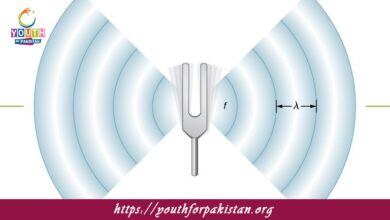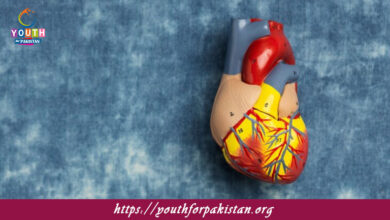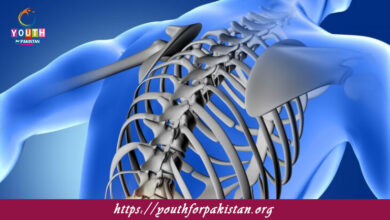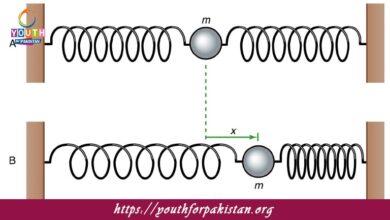Cyclic and Noncyclic Phosphorylation MDCAT MCQs with Answers
Welcome to the Cyclic and Noncyclic Phosphorylation MDCAT MCQs with Answers. In this post, we have shared Cyclic and Noncyclic Phosphorylation Multiple Choice Questions and Answers for PMC MDCAT 2024. Each question in MDCAT Biology offers a chance to enhance your knowledge regarding Cyclic and Noncyclic Phosphorylation MCQs in this MDCAT Online Test.
What is the primary difference between cyclic and noncyclic phosphorylation?
a) Cyclic phosphorylation produces oxygen; noncyclic does not
b) Noncyclic phosphorylation produces NADPH; cyclic does not
c) Cyclic phosphorylation produces glucose; noncyclic does not
d) Noncyclic phosphorylation only occurs in the dark
Which process is involved in cyclic phosphorylation?
a) Light-dependent reactions
b) Calvin cycle
c) Krebs cycle
d) Glycolysis
In cyclic phosphorylation, where does the electron transport chain occur?
a) Thylakoid membrane
b) Chloroplast stroma
c) Mitochondrial matrix
d) Outer membrane of the chloroplast
What is the primary product of cyclic phosphorylation?
a) NADPH
b) ATP
c) Glucose
d) Oxygen
Which type of phosphorylation generates NADPH?
a) Cyclic phosphorylation
b) Noncyclic phosphorylation
c) Both cyclic and noncyclic phosphorylation
d) Neither cyclic nor noncyclic phosphorylation
In noncyclic phosphorylation, what is the source of electrons?
a) NADH
b) FADH2
c) Water
d) Glucose
Which enzyme is involved in both cyclic and noncyclic phosphorylation?
a) RuBisCO
b) ATP synthase
c) NADP+ reductase
d) Carbonic anhydrase
Which of the following processes generates oxygen as a byproduct?
a) Cyclic phosphorylation
b) Noncyclic phosphorylation
c) Both cyclic and noncyclic phosphorylation
d) Neither cyclic nor noncyclic phosphorylation
In cyclic phosphorylation, what happens to the electrons after they pass through the electron transport chain?
a) They are transferred to NADP+
b) They are transferred back to chlorophyll
c) They are used to split water molecules
d) They are used to produce glucose
Which type of phosphorylation is responsible for producing NADPH?
a) Cyclic phosphorylation
b) Noncyclic phosphorylation
c) Both cyclic and noncyclic phosphorylation
d) Neither cyclic nor noncyclic phosphorylation
What is the role of water in noncyclic phosphorylation?
a) To provide electrons to the electron transport chain
b) To absorb light energy
c) To produce ATP
d) To release NADPH
Which molecule is regenerated in cyclic phosphorylation?
a) NADPH
b) ATP
c) Chlorophyll
d) Glucose
Which of the following is a product of noncyclic phosphorylation but not cyclic phosphorylation?
a) ATP
b) Oxygen
c) NADPH
d) Carbon dioxide
What is the main purpose of cyclic phosphorylation in plants?
a) To produce NADPH
b) To produce ATP
c) To fix carbon dioxide
d) To split water molecules
What happens to ATP produced in cyclic phosphorylation?
a) It is used in the Calvin cycle
b) It is converted to NADPH
c) It is stored in the thylakoid membrane
d) It is used to release oxygen
Which process involves the transfer of electrons through a chain of proteins in the thylakoid membrane?
a) Cyclic phosphorylation
b) Noncyclic phosphorylation
c) Both cyclic and noncyclic phosphorylation
d) Neither cyclic nor noncyclic phosphorylation
How does cyclic phosphorylation affect the production of ATP?
a) It decreases ATP production
b) It increases ATP production
c) It has no effect on ATP production
d) It stops ATP production
What is the ultimate source of electrons for noncyclic phosphorylation?
a) Water
b) NADH
c) FADH2
d) Glucose
Which component of the photosynthetic electron transport chain is involved in cyclic phosphorylation?
a) Photosystem I
b) Photosystem II
c) ATP synthase
d) NADP+ reductase
What is the role of ATP synthase in photosynthesis?
a) To transfer electrons
b) To convert ATP to NADPH
c) To synthesize ATP from ADP and inorganic phosphate
d) To split water molecules
Which process does not involve the production of NADPH?
a) Cyclic phosphorylation
b) Noncyclic phosphorylation
c) Both cyclic and noncyclic phosphorylation
d) Neither cyclic nor noncyclic phosphorylation
In which process does chlorophyll absorb light energy to initiate electron transport?
a) Cyclic phosphorylation
b) Noncyclic phosphorylation
c) Both cyclic and noncyclic phosphorylation
d) Neither cyclic nor noncyclic phosphorylation
What is the effect of cyclic phosphorylation on the Calvin cycle?
a) It provides NADPH for the Calvin cycle
b) It produces ATP for the Calvin cycle
c) It provides oxygen for the Calvin cycle
d) It has no effect on the Calvin cycle
Which molecule is used to provide electrons to the electron transport chain in noncyclic phosphorylation?
a) NADH
b) FADH2
c) Water
d) Glucose
In cyclic phosphorylation, how is the electron transport chain completed?
a) Electrons are transferred to NADP+
b) Electrons are transferred to water
c) Electrons are returned to chlorophyll
d) Electrons are used to produce glucose
Which process generates both ATP and NADPH?
a) Cyclic phosphorylation
b) Noncyclic phosphorylation
c) Both cyclic and noncyclic phosphorylation
d) Neither cyclic nor noncyclic phosphorylation
What is the role of photosystem II in noncyclic phosphorylation?
a) To produce ATP
b) To absorb light and split water molecules
c) To reduce NADP+
d) To return electrons to chlorophyll
Which type of phosphorylation is primarily used in photosynthetic organisms to produce ATP in excess?
a) Cyclic phosphorylation
b) Noncyclic phosphorylation
c) Both cyclic and noncyclic phosphorylation
d) Neither cyclic nor noncyclic phosphorylation
What is the fate of electrons in noncyclic phosphorylation after they pass through the electron transport chain?
a) They are used to split water
b) They are used to produce ATP
c) They are transferred to NADP+ to form NADPH
d) They are returned to chlorophyll
Which process is characterized by the production of only ATP and not NADPH?
a) Cyclic phosphorylation
b) Noncyclic phosphorylation
c) Both cyclic and noncyclic phosphorylation
d) Neither cyclic nor noncyclic phosphorylation
What is the role of plastoquinone in photosynthesis?
a) To absorb light
b) To transfer electrons from photosystem II to the electron transport chain
c) To produce NADPH
d) To synthesize ATP
Which process involves the cyclic flow of electrons through photosystem I?
a) Cyclic phosphorylation
b) Noncyclic phosphorylation
c) Both cyclic and noncyclic phosphorylation
d) Neither cyclic nor noncyclic phosphorylation
What happens to the NADP+ during noncyclic phosphorylation?
a) It is converted to NADPH
b) It is returned to chlorophyll
c) It is used to produce ATP
d) It is split into NADH and phosphate
Which process is associated with the production of ATP and NADPH in equal amounts?
a) Cyclic phosphorylation
b) Noncyclic phosphorylation
c) Both cyclic and noncyclic phosphorylation
d) Neither cyclic nor noncyclic phosphorylation
What is the main function of cyclic phosphorylation in the light-dependent reactions?
a) To generate NADPH
b) To create a proton gradient for ATP production
c) To produce glucose
d) To release oxygen
In noncyclic phosphorylation, what is the source of protons for ATP synthesis?
a) Water
b) NADPH
c) Oxygen
d) Glucose
Which process requires light to produce ATP?
a) Cyclic phosphorylation
b) Noncyclic phosphorylation
c) Both cyclic and noncyclic phosphorylation
d) Neither cyclic nor noncyclic phosphorylation
Which of the following occurs in cyclic but not noncyclic phosphorylation?
a) Production of ATP
b) Production of NADPH
c) Splitting of water molecules
d) Production of oxygen
If you are interested to enhance your knowledge regarding Physics, Chemistry, Computer, and Biology please click on the link of each category, you will be redirected to dedicated website for each category.




